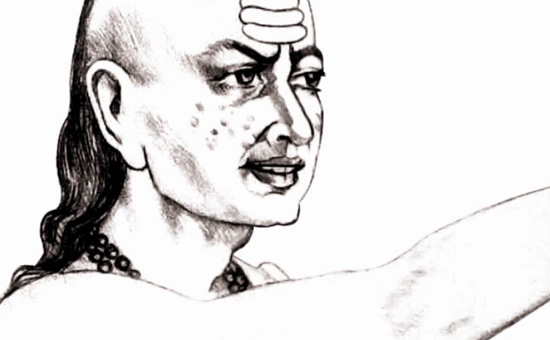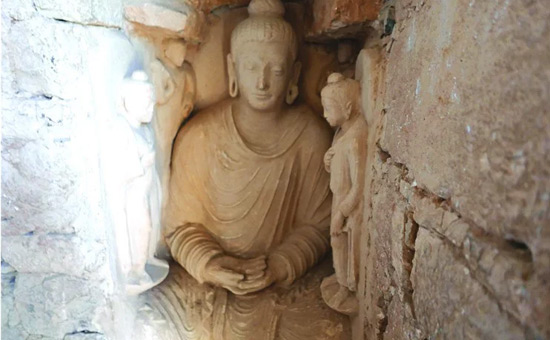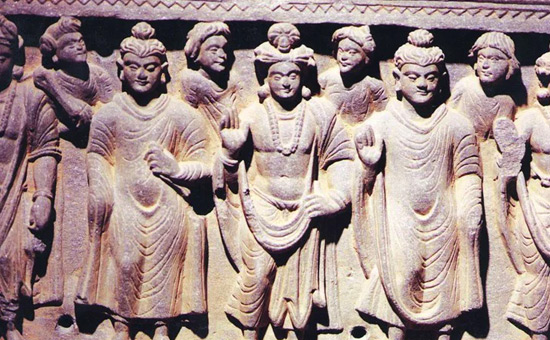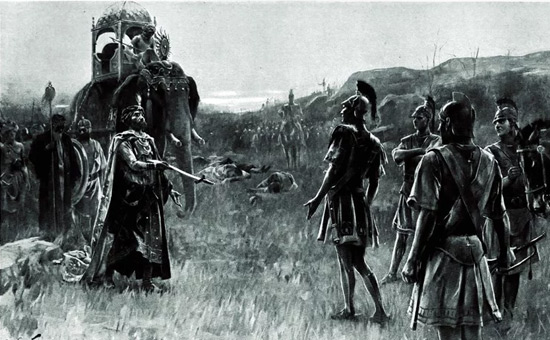-
What modern day Pakistanis have lost in their effort
to distance themselves from their Sub-continental origins. Author makes a case
for Pakistan to reclaim its heritage.
Pakistan was created to allow Muslims to live as free citizens without the fear of being dominated by a resurgent, occasionally hostile, Hindu majority. However, not feeling secure even in independence, Pakistani people have driven themselves to a social and historical narrative that strives to align our genetic origins with our religious roots in the East.
In pursuit of this goal, we have also shed our heritage; the very values and customs that defined a nation. Some of these trends to delink from the indigenous Indian society started a millennium ago in an atmosphere of insecurity due to frequent armed incursions from the Western passes. After independence, the Pakistani nation should have felt secure enough to display affinity with this land but then the religious zealots took us on a confounded and misleading trajectory.
At the outset, let it be clear that there is no illusion about religion being an important factor in the lives of people all over the world. Even in this age of relative atheism, “living together” and secularism in the liberal Western countries, where people have been estranged from religion, the church continues to hold a visibly important place in society. Irrespective of the level of affinity with religion, births, deaths and marriages are often solemnized as religious events in the church by a priest. Even under the communist regimes, where religion was officially abolished and legally suppressed for a hundred years, people continue to find solace in divine convictions.
 Chanakya
Chanakya
However, we in Pakistan have employed religion as a pivot to distance ourselves from our own land, culture, history and heritage. There has been little realization that in
attempting to be what we are not and in rejecting what we are, we will be lost
as a people. Being neither here nor there implies that we are nowhere.
We have an apt proverb in Urdu for this situation that describes a creature as
one half partridge and the other half a quail. That is our true description
too.
In trying to move away from being Indians, we have induced ourselves to be Arabesque or Persianate. Now, of course, the Arabs, Persians and Turks are our closest social and religious kith and kin, our natural allies and we feel a natural affinity for them. A large section of our people carries their genes, as well as habits of dress, food, culture and surnames.
However, we belong to the South Asian Subcontinent. We are neither Arabs, nor Turks, nor Persians.
Even if we try to be one of them, we shall become unacceptable intruders and
imposters. Try telling an Arab that in being a Syed, one is an Arab; or telling
a Turk that one’s surname of Bokhari entitles one to be a Turk; or a Persian
that being a Shirazi by name, one is Persian. Instead of acceptance, such a
claim can only raise a mocking smirk!
For some reason, we in Pakistan today portray Chanakya as a villain and a demon whereas he was a realist and understood the complexities of governing a large empire populated with diverse nationalities.
One staggering loss in this identity
crisis has been a name that has been appropriated by our Eastern
neighbour. We are children of the Indus. Most of the country and its nearly
entire grain producing farmlands are drained by this river and its numerous
large and small tributaries.
There are three major geographical divisions of the Subcontinent. One of them is the Vindhya Hill ranges that separate North and South India. The second is the gentle hump separating the east-flowing Ganges and its tributaries and the West-flowing Indus and its tributaries - this distinguishes the modern nations of Pakistan and Bharat.
The Persians called the land Hindush, a Sanskrit equivalent of Sindhu, which was the historical local reference to the Indus River. Even the ancient Greeks referred to the Indians as Indoi, which translates as “The people of the Indus”. We, the people of Pakistan were therefore in error in simply relinquishing the name ‘India’ to our
eastern neighbour. It is our name.
 Carving
of Lord Buddha in Pakistan
Carving
of Lord Buddha in Pakistan
The great Sanskrit poem Mahabharata tells us that Bharat, meaning the ‘Cherished’, was a descendant of the Lunar dynasty and was the ancestor of Kauravas and Pandavas, two antagonists of that epic battle. We are also told that he sacrificed horses on the banks of the Yamuna, the Saraswati and the Ganges, but none for the Indus. Bharat, therefore, is the proper religious, cultural and natural name of a country that reveres the Mahabharata and the Ganges.
That the people beyond the Indus were called Indoos or Hindus, who happened to be of a different religion, is a geographical allusion and not a religious one. Nevertheless, we the people of Pakistan, irrespective of their religion, are the true Indians; the inhabitants of the land of the Indus. Of course this cultural loss has now gained permanence as Bharat and India are the official names of our eastern neighbour but we need to be mindful of our cultural loss in losing our rightful alternate name.
 Stone
carving ancient Taxila
Stone
carving ancient Taxila
The second loss is that of historical narrative. This is a great loss and has multiple dimensions. The Subcontinent was ruled by Sultans of Turkish and Persian origin for seven hundred years, from the Ghaznavid raids in or about 1000 AD to Nader Shah’s invasion in 1739 AD. These ruling families, their fellow migrant noble compatriots and their chroniclers legitimately traced their history to their own lands of origin.
Unfortunately, this trend, fuelled by the religious class, crept in the psyche of most of the Subcontinent’s Muslims. My paternal grandfather’s great grandfather converted to
Islam. He was a migrant from Kashmir to Amritsar. My family had lived in
the valley for centuries since the Aryan irruption from Central Asia. How do I
shun or escape this history and at what point do I cut short my past and
dishonestly develop factitious links to some prominent town or personality of
the erstwhile Abbasid province of Khorasan? This is not to say that those who
do so, believing that to be their factual lineage, are wrong but the question
still stands: at what point in time does one start belonging to the land that
has nourished one’s forefathers and delete the various prefixes and suffixes that indicate them to be progeny of intruders
and raiders of this land?
When renouncing the history of our part of the land, we have become alienated from some of the sons of this
soil who should have done us proud. The first of these is the dignified Raja Porus who was born in the Punjab and
his kingdom extended over the Chaj Doab – the land falling between the rivers
Jhelum and Chenab. His blood descendants are more likely to be living amongst
us rather than across the border. We should claim
him as one of our heroes. There is hardly any reason for repudiating his
legacy from our national narratives especially when the famous battle of the
Hydaspes, between the ancient Punjabi armies of Porus and Greek forces of Alexander
the Great was fought in 326BC. That happened 900 years before Islam and 300
hundred years before Christianity came into being. We live on an ancient land
that was a thriving concern much before these religions came into existence. We
should be proud of that.
Taxila –
Takshashila – of the ancient world- was the centre of a great civilization. One
of its greatest luminaries was Chanakya,
also known as Kautilya, He was a philosopher, a political scientist and an
economist. His Arthasastra is perhaps the first ever treatise on
politics, statecraft and economics, predating Machiavelli’s The Prince by 1,800 years. He mentored Chandragupta,
the architect of the Mauryan Empire and served as his Chief Minister. He was in
his 40s when Alexander traversed from north to south through the land that
constitutes all four provinces of Pakistan. He helped
in defeating and expelling the Greeks from Punjab to well across the
Indus. He is perhaps the greatest Indian of the ancient world and he was born
and raised in Taxila; on the northern slopes of Islamabad’s Margalla Hills.
For some reason, we in Pakistan today portray Chanakya as a villain and a demon whereas he was a realist and understood the complexities of governing a large empire populated with diverse nationalities. He was a great philosopher of political science and laid the foundations of this discipline of scholarship. His appearance in the sketches available on the internet casts him as a typical temple priest. They are images conceived by a Brahmanical mind set and may or may not bear any similarity to the historical Chanakya. However, that is immaterial. He, too, lived much before the advent of Islam or Christianity and Pakistanis should not
hold a religious grudge against persons of pre-Islamic times. We should
be proud that our land – in the neighbourhood of our capital city – gave birth
to this sage. We could even establish a department in Taxila University in his
name to teach political science and political economy, the subjects that he
conceived.
The legacy of the Gandhara civilization is primarily our heritage & not necessarily that of the people of the Ganga-Yamuna or trans-Narmada regions.
Among so many others, another local achievement of great significance that we have neglected to tell our children is the fact that the oldest mathematical manuscript in the world was
found at Bakhshali, a village north-east of Mardan. The document, carbon
dated to AD 224-383, contains the first recorded zero in history. The 70 leaves
of birch bark contain mathematical rules, problems and their solutions in
arithmetic, algebra and geometry, on topics of fractions, square roots,
progressions and equations of linear and quadratic type. That is a lot of
modern calculations. No wonder that India is
acclaimed as the original home of numerals and mathematics! It
flourished in the regions encompassing the Taxila civilization from where it
spread eastwards to the rest of the Subcontinent and westwards to Persia and
beyond.
The cultural and scientific achievements that are the legacy of the Gandhara civilization are primarily our heritage and not necessarily that of the people of the Ganga-Yamuna or trans-Narmada regions who now take the overwhelming amount of credit for these inventions.
 War
King Porus with Alexander
War
King Porus with Alexander
It is actually the ancestors of modern-day Pakistanis who have given numerals and mathematics to the world. We should feel that pride and claim the honour.vertical-align:baseline'>The next part of this series will discuss our lost heritage in terms of festivals, names and religious figures.
Author retired as a Group Captain from PAF and is now a software engineer. He lives in Islamabad and writes on social and historical issues.
This article was first published in TheFridayTimes.com here. eSamskriti
has obtained permission from the author to share. Copyright lies with first
publisher.
To read all
articles by Author
Meenakshi Sharan wrote, “The ancient Purushpur was the
western terminus of a Mauryan road that connected the city to its capital
Patliputra, near the modern day Patna. Peshawar was also headquarters of the Nath
Panthi Yogis. The Sufis, Hydaris of the invading Muslims were influenced by
Nath Yogis and adopted their yogic practices”.
“The
Paariyatra/ Pāriyatra Parvat is shamelessly called 'Hindu Kush', meaning, 'the Killer of Hindus', a name given by the Muslim to the Western Himalayas! (Persian Kush means, to kill)”.
Also read
1 Who
was responsible for Partition?
2 Hindu
resistance to the Islamic conquest of Sindh, Punjab and Kabul
3 The
Wonder that was Khorasan Part 2